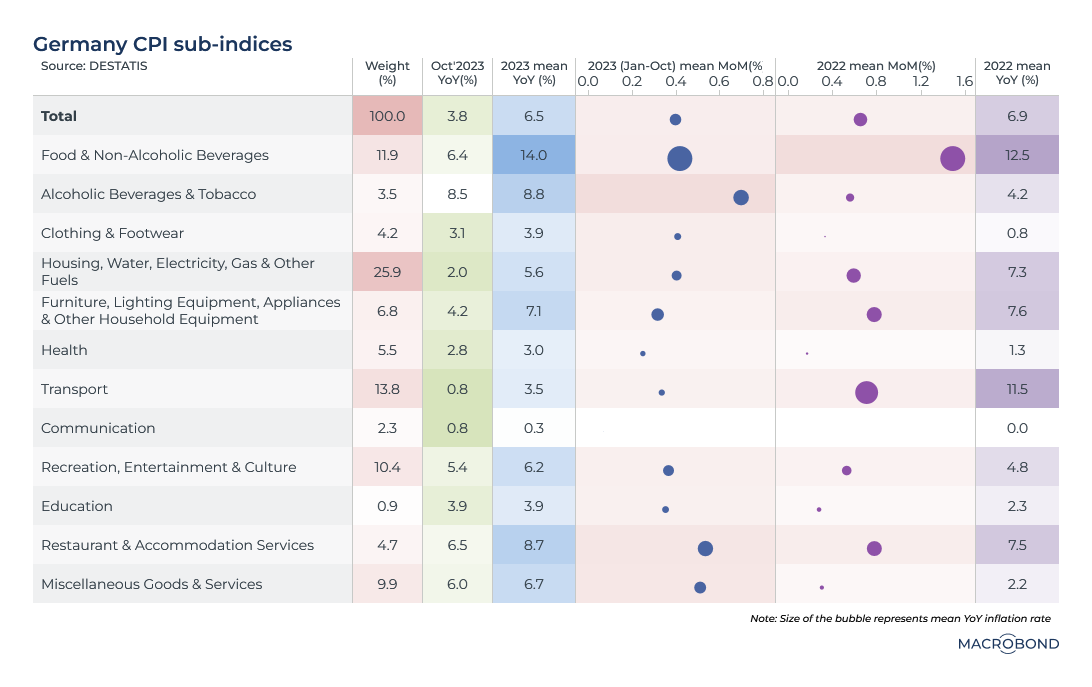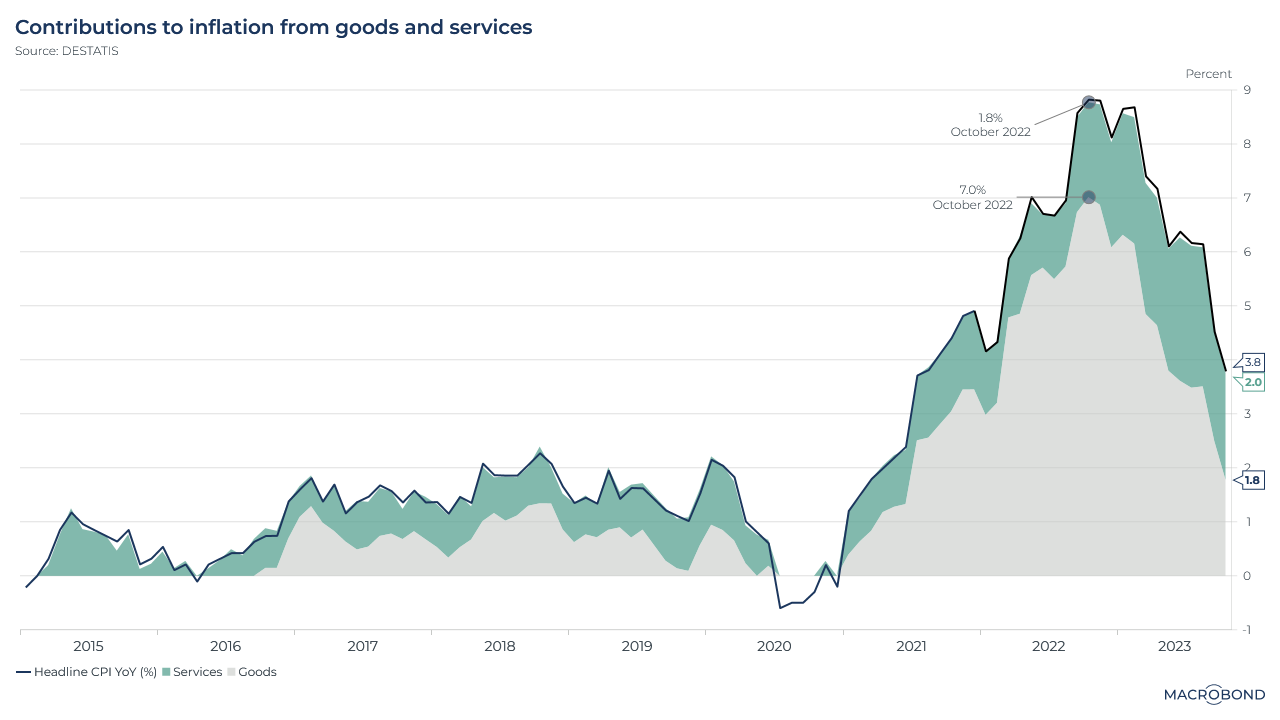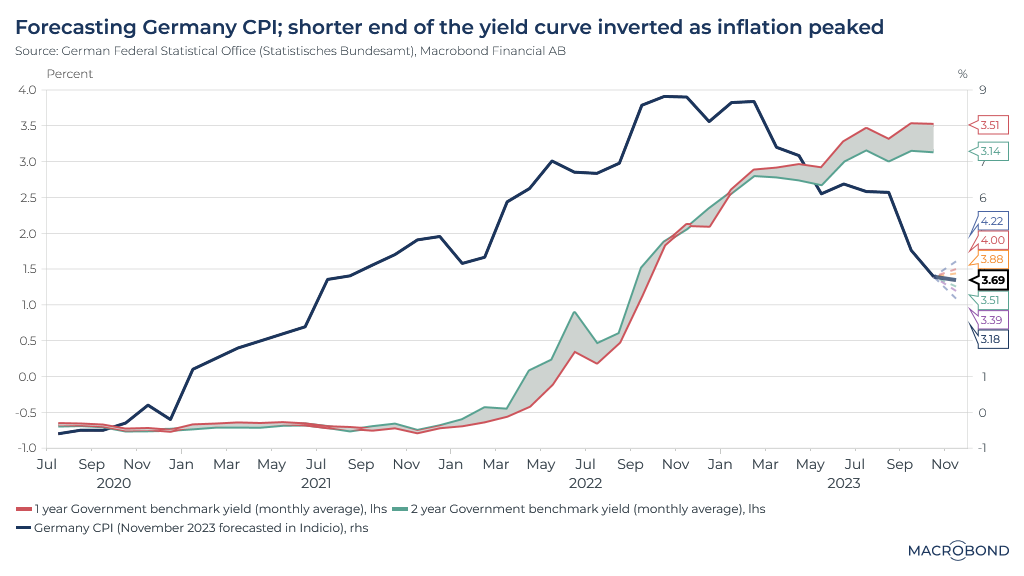Modeling how German inflation might be easing with Indicio
.png)
The German economy has faced headwinds through 2023, with a backdrop of sustained inflation and higher borrowing costs. The market is expecting a reversal of this trend, with steadily decelerating inflation making room for a more accommodative stance by the European Central Bank in 2024 and beyond.
To generate a prediction for German inflation figures that are due on Nov. 29, we used our partnership with Indicio Technologies. We deployed univariate and multivariate forecasting techniques that incorporated food, fuel and core inflation category indicators.
We also chose consumer confidence as an input parameter to gauge the underlying demand conditions – this indicator has been waning amid Germany’s economic challenges.
Our model calls for the consumer price index to rise 3.7 percent year-on-year for November, slowing slightly from the 3.8 percent pace in October.
To consider the backdrop to our forecast, the following charts analyse the components that have been contributing to inflation.
The inflation story so far
Our first visualisation plots inflation trends in the various CPI sub-indices, comparing October year-on-year figures to the 2023 and 2022 year-on-year averages. The table’s wider columns track month-on-month averages for the various categories; bubble size represents the average year-on-year pace.

Diverse supply- and demand-side factors have impacted CPI trends for Germany over the past two years. Cost-push pressures – primarily in food and fuel – surged after Russia’s invasion of Ukraine.
Since then, inflation has cooled off swiftly, helped by a decline in wholesale energy prices and government policies that aimed to shield consumers.
The contribution to headline inflation from major categories, such as the housing and utilities bucket (with a weighting of 25.9 percent in the CPI) and transport (a 13.8 percent weighting) has come off sharply. October inflation for these two segments slowed to 2 percent and 0.8 percent respectively.
Food inflation is lingering, however. Disruption in food supply chains is being accentuated by the tightness in the labour market, keeping costs elevated for food processing, restaurants and supermarkets. The “food & non-alcoholic beverages” and “restaurant & accommodation services” buckets are among categories with the worst inflation, both in October and for 2023 as a whole; the food and drink category’s bubble size and rapid month-on-month advance is also notable in 2022.
The evolving macro dynamics have seen the transmission of higher input costs into services, as our next chart shows -- breaking down the respective contribution of goods and services to headline inflation. The elevated goods inflation of 2022, coupled with a rise in wages, has resulted in sticky core inflation.

It’s worth noting how the green “services” band has gradually widened. At its October 2022 peak, goods inflation contributed 7 percentage points to inflation, while services contributed just 1.8 percent. But the October 2023 print indicates that services contributed 2 percentage points to inflation – exceeding the 1.8 percent contribution from goods.
That’s important because services inflation tends to be sticky, and the deceleration towards target is likely to be slower.
Watching the markets: the CPI vs. two-year yields
The International Monetary Fund is forecasting that German CPI will slow to 3.5 percent in 2024 and 2.2 percent in 2025 – still above the central bank’s 2 percent target.
As for the markets, Euro STR futures are pricing in the first ECB rate cut by the second quarter of next year. In bonds, one-year German debt started out-yielding its two-year equivalent almost a year ago, as our chart shows; i.e., the inversion began right around the time that inflation peaked.
The inverted yield-curve corridor, in grey, indicates that even lower interest rates (tracking lower expected inflation) are expected two years down the line.
We have also added, in bold, the 3.7 percent November CPI forecast that we generated with Indicio -- flanked by various confidence intervals. Monetary policy transmission is effective with lags and getting to target inflation can take longer.

3 topics
.png)
Macrobond delivers the world’s most extensive macroeconomic & financial data alongside the tools and technologies to quickly analyse, visualise and share insights – from a single integrated platform. Our application is a single source of truth for...
Expertise
.png)
Macrobond delivers the world’s most extensive macroeconomic & financial data alongside the tools and technologies to quickly analyse, visualise and share insights – from a single integrated platform. Our application is a single source of truth for...
.png)